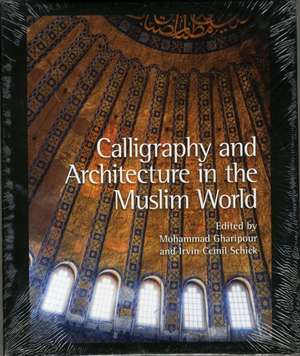Calligraphy and Architecture in the Muslim World
Autor Mohammad Gharipour, Irvin Cemil Schicken Limba Engleză Hardback – 29 noi 2013
Preț: 888.95 lei
Preț vechi: 1051.10 lei
-15% Nou
170.12€ • 177.38$ • 141.39£
Carte disponibilă
Livrare economică 28 februarie-14 martie
Specificații
ISBN-10: 0748669221
Pagini: 592
Ilustrații: 401 colour illustrations, 12 b&w tables
Dimensiuni: 259 x 300 x 33 mm
Greutate: 2.59 kg
Editura: EDINBURGH UNIVERSITY PRESS
Notă biografică
Mohammad Gharipour is Associate Professor at the School of Architecture and Planning at Morgan State University in Baltimore, Maryland. He obtained his Master's in Architecture from the University of Tehran and a Ph.D. in Architecture and Landscape History from Georgia Institute of Technology. He has received several awards such as the Hamad Bin Khalifa Fellowship in Islamic Art, the Spiro Kostof Fellowship Award from the Society of Architectural Historians and the National Endowment in Humanities Faculty Award. His books include Persian Gardens and Pavilions: Reflections in Poetry, Arts and History and Bazaar in the Islamic City and Calligraphy and Architecture in the Muslim World (co-edited with Irvin Schick). He is the director and founding editor of the International Journal of Islamic Architecture.
Irvin Cemil Schick is Assistant Professor in Cultural Studies at Istanbul Sehir University. Irvin Cemil Schick holds a PhD from the Massachusetts Institute of Technology. He has taught at Harvard University and MIT, and is currently at Istanbul Sehir University.













